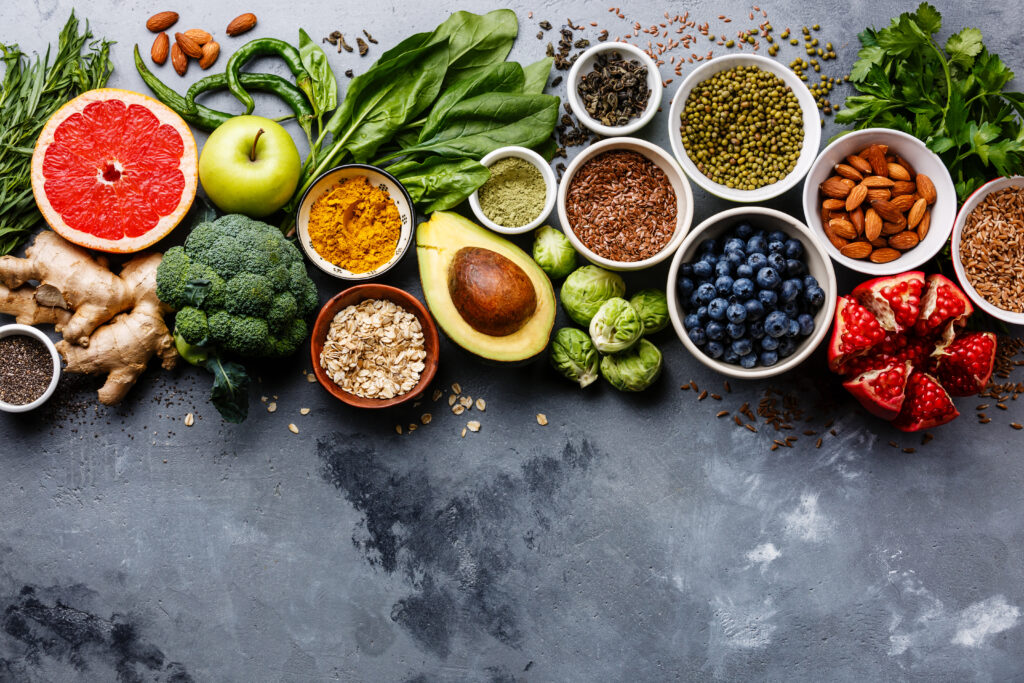Are consumers getting what they are paying for?

By Mohammad Abdullah
November/December 2022
The Supermarket News’ website noted on May 25, 2021, that organic product sales in the U.S. climbed 12.4% in 2020, breaking the $60 billion mark for the first time. According to another report uploaded to on Feb. 18, 2021, these sales are estimated to be worth $272.18 billion by 2027. This report also made a rather stunning comment: Consumers spend billions on food that might not really be organic.
Disagreements between small-scale, locally-grown organic farming advocates and the manufacturers and distributors seeking to profit from this rapidly growing sector have helped set organic standards and requirements. One outcome of this is that the country’s national organic program (NOP) requires all agricultural products labeled “organic” to be produced on certified farms and handled through certified operations.
NOP has the regulatory oversight responsibilities for the United States Department of Agriculture’s (USDA) organic standards and accreditation of organic certifying agents, as well as the authority to take appropriate legal action and protect the integrity of its organic standards anywhere in the world.
Organic food consumers, therefore, tend to trust it and pay more for organic products. In doing so, they support an agricultural system that avoids synthetic fertilizers and pesticides and promotes a more biodiverse ecosystem. But in return, they expect to get what they pay for.
A CBS News report (July 12, 2018) sums up this point, “The ‘USDA Organic’ seal generally signifies that a product is made and processed with relatively minimal synthetic pesticides and fertilizers and that animals are raised according to certain guidelines. But disputes over the rules, and questions about adherence, may raise doubts about whether the price is justified.”
As this report points out, there seems to be a breakdown in the system. For example, the final rule provides for the importation of organic agricultural products from countries determined to have equivalent requirements, such as soybeans (China), spices (India) and dried fruit (Turkiye). Each exporting country may have its own certification system, and the imported food products go through complex global supply chains comprised of many different businesses between the farmer and the final customer. The professionals call these “food mileage” or “supply chain” challenges.
The U.S. system has similar problems. According to Miles McEvoy, the then USDA Inspector General, “Agricultural products sold or labeled as organic must be produced only on certified farms and handled only through certified operations and that no such system is in place to be sure that it happens” (Food Safety News, Sept. 20, 2017).
Interestingly, Hank Campbell opined in the Detroit News (Oct. 3, 2019) that “Food labels these days are like the Wild West of dishonest advertising. Organic food is widely marketed as the healthier, pesticide-free alternative to conventional options. Yet, the dirty little secret is that organic food is no healthier than its conventional counterpart.”
A 2009 independent study, funded by the UK Food Standards Agency — “Organic food not healthier, says FSA” – (The Guardian, July 29, 2009) said that organic food is no healthier and provided no significant nutritional benefit compared with conventionally produced food.” Experts and organic food supporters, however, have questioned its conclusions.
Robert L. Paarlberg (professor, Wellesley College; associate, The Weatherhead Center for International Affairs, Harvard University) argued that “some people buy organic food thinking it’s healthy. Others buy organic because they assume it comes from farms that are smaller, more traditional, but this is not a safe assumption either. Most organic food on the market today comes from highly specialized, industrial-scale farms, not so different from those that produce conventional food”.
Writing in The New Yorker (Nov. 8, 2021), Ian Parker noted that “an established grain trader recently remarked that the organic certification industry is essentially toothless, and several organic old-timers said that farmers often turn to organic production purely for the price advantage. A farm’s organic certification is good for a year. It doesn’t get used up by sales. If a farmer has only a dozen organic apple trees, but agrees to sell you a million organic apples, you are unlikely to learn that you have a problem merely by looking at the orchard’s certification. As long as the farmer maintains control of some fields certified as organic, almost nothing stands in the way of his selling non-organic food obtained elsewhere, as if it all had been grown in those fields.”
Organic Food Fraud
According to the Decernis Food Fraud Database, “organic foods are one of the food types most frequently affected by food fraud.” In addition, Harriet Behar, an Organic Farmers Association Governing Council and Policy Committee member, states that “The Tragedy of Fraud,” that “the scale and elaborate nature of the fraud over the past decade spans hundreds of truckloads, numerous large ocean-going vessels, and hundreds of millions of dollars”.
A few examples:
• Four Midwestern farmers admitted they grew non-organic corn and soybeans, along with a small amount of certified organic grains, and marketed them all as organic. Most of the grains were sold as animal feed to companies that marketed organic meat and meat products.
• A $12 million shipment of (supposedly) organic raspberries was intercepted at the Chilean border with fake organic declarations and fraudulent paperwork claiming they were grown in Chile. They had been imported to Chile from China so the fraudsters could pretend they were locally grown. And they were not organic.
• A shipment of 36 million lbs. of non-organic soybeans from Ukraine was labeled as organic.
Peter Laufer, author of “Organic: A Journalist’s Quest to Discover the Truth Behind Food Labeling” (2014), noted the conflict of interest built into the U.S. system in the U.S.: The companies that inspect organic farmers and processors, as well as certify their product, are paid by those that they certify.
In the midst of all this, some consumers wonder if food-certified organic is really organic. According to a Mayo Clinic report (April 22, 2022), they cannot. A report in the Washington Post (May 22, 2017) by Jason Kuo, then a postdoctoral fellow at the Mortara Center for International Studies at Georgetown University, elaborated that Washington doesn’t enforce its standards, not all countries have U.S.-recognized regulations, certification remains challenging in a complex global economy, 33 of the 82 authorized third-party certifying agents are foreign and the USDA has limited resources.
The National Center for Biotechnology Information’s Aug. 14, 2021 report suggested that the USDA develop a strong guardianship regimen by using an effective surveillance system that can identify those guardians who are complicit (doi: 10.3390/foods10081879).
On Sept. 20, 2017, Dan Flynn reported in Food Safety News that the “IG audit recommends AMS work with Customs and Border Protection to review organic import information at the border with an electronic message system between the two agencies.”
After years of criticism, the USDA is finally dealing with this problem by proposing amendments to protect the organic supply chain’s integrity and build consumer trust in its organic label by strengthening organic control systems, improving farm-to-market traceability and robustly enforcing its own organic regulations.
However, no one should expect organic agriculture to top conventional techniques any time soon. Robyn O’Brien reports on www.robynobrien.com that as of 2016, American farmers had certified less than 1% of their cropland for organic production. Farmers tend to hold back because it requires more labor to handle the composted animal manure used for fertilizer, as well as more labor to control weeds without chemicals.
On the contrary, conventional methods still predominate in many parts of the world. In 1909, Fritz Haber developed a high-temperature, energy-intensive process to synthesize plant-available nitrate from the air. Farmers who use it save labor and enjoy higher crop yields. Since then, the world population has increased from 2 to nearly 8 billion, and some regions are suffering from food insecurity. The use of nitrogen fertilizer helped farmers during the 20th century — and can do so again.
What Consumers May Want to Know
Organic food is a big risk for the supply chain to begin with and disruptions in the supply chain make it more difficult to keep the organic and non-organic separated. As a result, some companies are shifting toward sourcing more domestically to avoid global shipping delays. For example, according to Civil Eats, “In 2021, about half of the organic soybean meal Egg Innovations’ farmers fed to chickens came from India; this year, all of it will come from American farmers. It has sent the feed prices soaring and the company is upping its supermarket prices to reflect that cost” and on June 1, 2022, the USDA announced details of a framework for shoring up the food supply chain and transform the food system to benefit consumers, producers and rural communities.
When organic standards were established in 2000, the then Secretary of Agriculture Dan Glickman emphasized, “Let me be clear about one thing, the organic label is a marketing tool. It is not a statement about food safety. Nor is ‘organic’ a value judgment about nutrition or quality”.
For more information on these issues, consult https://www.ams.usda.gov. At the grocery store, look at the Price Look Up (PLU) sticker. If the produce is organic, the code will contain five-digits beginning with 9. Non-organic counterparts will have four digits (https://www.aarp.org>healthy-eating>info-04-2012>re).
The USDA deserves commendation for acknowledging weaknesses in the current NOP and acting to correct it. Hopefully, its proposed amendments will be approved and enforced soon, because consumer trust is the basis for organic farming’s success. Meanwhile, consumers should realize that there is not much difference between organic and non-organic food in terms of nutrition.
Mohammad Abdullah, DVM, MS (Ag Technology), MPH, retired as deputy district manager at USDA-FSIS, the federal agency that regulates the meat industry. He is author of “A Closer Look at Halal Meat: From Farm to Fork”.
Tell us what you thought by joining our Facebook community. You can also send comments and story pitches to horizons@isna.net. Islamic Horizons does not publish unsolicited material.
